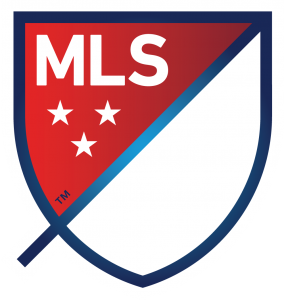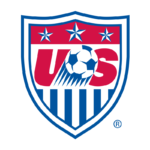Dure: Will U.S. Soccer find opportunity in Yedlin training compensation crisis?
 Doing things differently from the rest of the world has its advantages at times.
Doing things differently from the rest of the world has its advantages at times.
It allows the USA to use a league structure that takes its geography and history into account. It allowed Hungary’s “Magical Magyars” to lead a tactical revolution.
But when it comes to doing the business of soccer, federations have a lot of good reasons to be, if not on the same page, at least in the same book.
That’s the crux of the dispute between U.S. Soccer, MLS, and Crossfire Premier, the Redmond, Washington youth club at which Tottenham Hotspur’s DeAndre Yedlin spent some of his formative years.
As Sports Illustrated writer (editor’s note: and SoccerWire.com alumnus) Liviu Bird reported with impressive skill and detail, Crossfire claims the club is due a share of the money from Yedlin’s transfer from MLS to Tottenham, and the club has appealed to FIFA to help MLS find its wallet.
Tottenham agreed, at least at first, according to the documents Crossfire sent to FIFA. But then, according to the Crossfire account, MLS directed Tottenham that such payments — “training compensation” and “solidarity contributions” in FIFA parlance — are illegal, and that all the money for the Yedlin transfer must go to MLS.
And Crossfire is just the beginning.
 From the documents Crossfire filed: “Crossfire is aware of at least 7 other US Youth Soccer Clubs that have training compensation and/or solidarity fees payable from soccer clubs outside the United States. … The number of US Youth Soccer Clubs in the class could be over 100.”
From the documents Crossfire filed: “Crossfire is aware of at least 7 other US Youth Soccer Clubs that have training compensation and/or solidarity fees payable from soccer clubs outside the United States. … The number of US Youth Soccer Clubs in the class could be over 100.”
FIFA has clear-cut (if often evaded) rules on the matter. They’re spelled out in the lively “Regulations on the Status and Transfer of Players.” Some of these rules are bureaucratic and seemingly pointless. D.C. United Women fans may remember waiting for Joanna Lohman and Lianne Sanderson to regain “amateur” status 30 days after they last played “professionally” in Spain.
+READ: Dure: Did U.S. soccer structure fail Freddy Adu?
(File this away for later: In Article 1, FIFA insists on certain provisions that must be followed to the letter of the regulations. In other cases, following the “principle” is acceptable. The regulations that apply to Yedlin’s case — Articles 19-21 and “annexes” aren’t listed in either category.)
The ideas behind Articles 19-21 are clear. They want to stop abuses of minors such as the heartless trafficking of players who are too often left with nothing. Such problems can’t be solved in their entirety from Zurich, but these rules are a start, throwing up one roadblock in the path of shady pseudo-agents spiriting young players to Europe.
 Also, the articles on “training compensation” and a “solidarity contribution” provide an incentive for clubs to develop young players. Small clubs can use it as a lifeline to keep paying for coaches and facilities. Big clubs can opt to do their development in-house or just pay the lower-tiered clubs to do it for them.
Also, the articles on “training compensation” and a “solidarity contribution” provide an incentive for clubs to develop young players. Small clubs can use it as a lifeline to keep paying for coaches and facilities. Big clubs can opt to do their development in-house or just pay the lower-tiered clubs to do it for them.
For many clubs, it can help them open the academy doors a bit wider so players don’t have to pay to play. Crossfire says the money would help provide more scholarships such as the one Yedlin received, while also reducing overall team fees.
So the FIFA regulations are clear, as are the benefits. What’s the holdup in the USA?
An MLS spokesperson deferred to a U.S. Soccer spokesperson, who didn’t respond to requests for comments. But Crossfire’s documents tell us plenty: “USSF and MLS are maintaining that Crossfire and all US Youth Soccer Clubs cannot legally accept training compensation or solidarity fees because of a “consent decree” in a United States Federal district court in Massachusetts in the case of Fraser v. MLS, Case No. 97-10342.”
+READ: Dure: U.S. youth soccer chaos requires smart choices
Fraser v MLS is the landmark case in which several first-generation MLS players unsuccessfully sued the league, and U.S. Soccer was also a party to the suit. In February, VICE Sports’ Jorge Arangure Jr. examined another possible fee challenge — this one involving Rubio Rubin — and found that the Fraser proceedings included an agreement between the plaintiffs and U.S. Soccer that USSF would not “pay nor request a transfer fee payment for an out-of-contract player.” (Crossfire cited the Arangure report as an exhibit in its filing to FIFA.)
 “Out-of-contract” usually refers to pro players who played through the term of their deal with a club before signing or being transferred elsewhere. Before Jean-Marc Bosman challenged the system in the early 1990s, clubs could hold onto out-of-contract players and demand a transfer fee from any other club that wished to sign them. It’s not commonly applied to 15-year-olds who leave their local youth clubs for a pro club’s academy.
“Out-of-contract” usually refers to pro players who played through the term of their deal with a club before signing or being transferred elsewhere. Before Jean-Marc Bosman challenged the system in the early 1990s, clubs could hold onto out-of-contract players and demand a transfer fee from any other club that wished to sign them. It’s not commonly applied to 15-year-olds who leave their local youth clubs for a pro club’s academy.
But USSF is standing strongly behind Fraser and the “consent decree,” the contents of which are apparently classified. The Crossfire filing to FIFA has an excerpt from a USSF email from May 29: “As we previously discussed with Mr. Trust, by consent decree approved by the United States District Court for the District of Massachusetts in Fraser v. MLS, Case No. 97-10342 (GAO), U.S. Soccer cannot impose, implement, or enforce, in any way, those rules, statutes, or regulations adopted by the FIFA relating to the payment of training and development fees. We do not provide copies of the consent decree.”
Crossfire points out that the Fraser proceedings (trial in 2000, though appeal continued until 2002) pre-dated the FIFA regulations (2001).
+READ: Dure: Youth soccer’s vanishing middle class
At least the USA isn’t completely alone in this stance. German club SV Wilhelmshaven, apparently not a description of a beardless royal, challenged FIFA all the way to the Court of Arbitration for Sport and went on to challenge the jurisdiction of CAS itself.
The USA has a few other unique circumstances. One solution would be to sign players to professional contracts at an earlier age. But that’s not feasible for a youth-focused club like Crossfire Premier. Nor is it always feasible for MLS academies that lose players to Jurgen Klinsmann’s “Europe ahoy!” mindset. Deadspin’s Billy Haisley explains:
Because few kids are such surefire long-term pros that they’d be willing to give up a possible college soccer career, it’s harder to convince them to sign at those ages. Fix that and the problem is greatly minimized.
Despite all the hurdles, the USSF and MLS have the incentive to figure out a way to make training compensation work. A law professor and a student, writing for the Vanderbilt Journal of Entertainment & Technology Law, found the USA, including MLS, was hurting itself:
Training compensation was enacted by FIFA to prevent mainly European clubs from signing youth players from poorer clubs outside of Europe without compensating such clubs for developing the players. The issue of pillaging another country’s players is no longer a tactic used solely by European clubs. Mexican teams have now begun to pluck Mexican-American players from US youth teams without the proper compensation.
Would the USSF have a stronger case if they relied on U.S. child labor law instead of an out-of-context piece of the Fraser proceedings? The Vanderbilt analysis poked holes in that notion, but they cite no case precedent, and there’s no sign that such precedent exists.
 Meanwhile, the USA is indeed acting to give incentives for youth development. Double Pass, a Belgian firm that evaluates academies in soccer powers Belgium and Germany, will be doing the same thing for U.S. Soccer. The evaluations will give third-party data to show which youth academies are doing well beyond the league standings.
Meanwhile, the USA is indeed acting to give incentives for youth development. Double Pass, a Belgian firm that evaluates academies in soccer powers Belgium and Germany, will be doing the same thing for U.S. Soccer. The evaluations will give third-party data to show which youth academies are doing well beyond the league standings.
If the USA can follow through with Double Pass and help clubs reap rewards from training players who go elsewhere, clubs could be competing for something beyond the trophies that reward short-term thinking. They’ll be competing to give players the best possible development environment.
+READ: Dure: Machiavelli’s guide to winning in youth soccer
The devil will be in the details — the NCAA complicates everything in U.S. soccer, and a lot of youth clubs wouldn’t know what to do with a sudden windfall. But it could make a tipping point in the “winning vs. development” struggle that’s been ongoing in U.S. youth soccer for decades.
On the other hand, the USSF and MLS could continue to be stubborn on this system just as MLS was with “free agency” in the last round of collective bargaining with their players. In doing so, they’ll hurt their international reputation and make it more difficult to catch up with the rest of the world in the youth and professional ranks.
The hurdles are real. But so are the benefits to working it out — if not to the letter of FIFA’s regulations, at least to the principle.
SOCCERWIRE MARKETPLACE
- Capital Fall Classic 2025 - Register by October 1st
- Applications are Now Open for the 2026 Jefferson Cup
- Start the Season Strong at Loudoun Premier Cup!
- 50th Annual Rael Vodicka Memorial Tournament
- Soccer Marketing Internships at The St. James FC
- Job Opening: The St. James FC Goalkeeper Academy Coach
- Full-Time Director of Goalkeeping for The St. James FC
- visitRaleigh.com Showcase Series 2025, hosted by NCFC Youth
- Join Official Elite Summer Soccer Camps with Europe’s Top Pro Clubs!
- OFFICIAL BAYERN MUNICH SUMMER CAMPS U.S.











